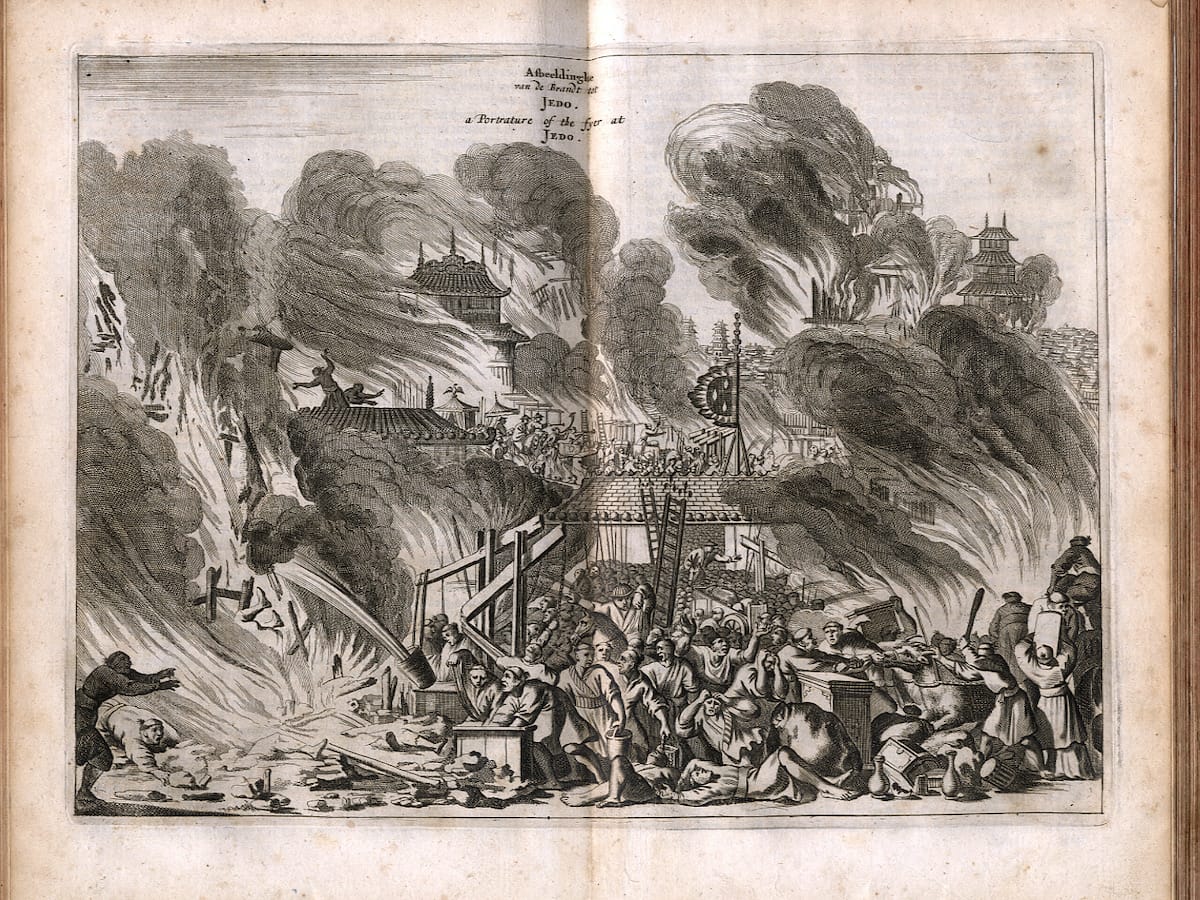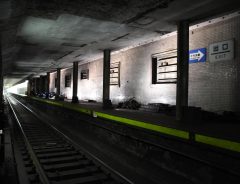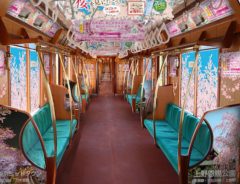
Source: WolfgangMichel, CC BY-SA 3.0, via Wikimedia Commons
How the Great Fire of 1657 shaped modern Tokyo
- Tags:
- Edo / Edo Period / Fire / History / The Great Fire of 1657 / Tokyo / urban planning
Related Article
-

Harajuku Store Offers Poop Emoji Ice Cream Served In Miniature Japanese Style Toilets
-

Experience an explosion of colour this December with these vegan Christmas drinks
-

Dinosaur Treats Inside Japan’s Jurassic World Cafe
-

Tokyo Subway Light Up Forgotten Stations and it’s Partly Creepy-Cool, Partly Historical-Cool
-

Breaking Boundaries: How one student with a learning disability reignited the spark in staff at a micro pig cafe
-

Commute In Style To Cherry Blossom Viewing Parties With Tokyo’s New Sakura Train


Take a stroll around modern Tokyo and the city appears to be the epitome of orderly peace and calm. It’s hard to believe that it was destroyed not once but twice in the course of the 20th century, first by earthquake and fire in 1923, and then by American bombs in 1945.
Those are not the only times Tokyo has met with calamity. In the days when the city was known as Edo, it was a city of wood and thatch. Fire was a perennial hazard and Edo was razed to the ground on many occasions, only to rise again from the ashes like a phoenix.
One of the most destructive of these fires was the Great Fire of 1657. But it was also one of the most formative, for the consequences of the changes made to the layout of the city in the wake of the fire can still be seen today.
Edo citizens trying to escape advancing flames with their chests on wheels during the Great Fire of 1657. Woodblock print from the Musashi Abumi published in 1661. | Heineken, Ty & Kiyoko, CC BY-SA 3.0, via Wikimedia Commons
Edo was still a new city in 1657. The shogun had moved his headquarters from the old capital of Kyoto to the village of Edo just 50 years before. In the intervening period, a building boom had ensued, and the village had mushroomed to become one of the largest cities in the world.
The Great Fire of 1657 started in Hongo, spread to Yushima and Kanda and down to Ginza. It raged for three days, blown through the city by gale-force winds. The population of Edo was 400,000 in 1657. By the time the last embers were extinguished at least a quarter of them were dead.
It was said that the Kanda River was piled so high with corpses that the river appeared to be dry land. Three quarters of the city’s buildings were reduced to ashes, including most of the complex of buildings that comprised Edo Castle.
Map of the Great Fire of 1657, showing the direction of the flames and the districts affected. | Fraxinus2, CC BY-SA 4.0, via Wikimedia Commons
In the wake of the fire, the shogun issued a string of decrees to address the causes of the fire. Until 1657, the only firefighters in the city had been the private corps protecting the powerful lords of the city and even they couldn’t put out the flames. As a result, 500 of the feudal lords’ magnificent Momoyama-style palaces were burned to the ground.
The shogun ordered fire wardens to patrol every neighbourhood, and teams of volunteers organised. These forerunners of the fire brigade became the backbone of the community. They also play a key role in explaining the origins of the yakuza, Japan’s mafia.
As for the feudal lords’ palaces, they were rebuilt, but further removed from the area around the castle, and in a more discreet, subdued style that set the tone for the city’s aristocratic districts for centuries to come.
The Great Fire of 1657 also incinerated 350 temples and shrines. They had been clustered around Edo Castle, but in the wake of the fire, the shogun ordered them to be rebuilt further afield. Look at a modern-day map of Tokyo and you can see a distinct ring of temples and shrines four or so miles from the Imperial Palace, in Asakusa, Yanaka, Yushima, Hongo, Ushigome, Yotsuya and Azabu.
The Great Fire was also the spur that drove the expansion of the fledgling city. Until 1657, the timber yards had been in Nihonbashi, in the heart of the city. After the fire, they were moved to Fukagawa, on the far side of the River Sumida. At the time Fukagawa was just a fishing village, but it quickly became a warehouse and factory district, which it largely remains to this day.
Edo was a terribly overcrowded city, which is one reason why tens of thousands of people perished on the west bank of the river, unable to escape the encroaching flames.
After 1657, a concerted effort was made to relieve the crush. Swampy areas east of the Sumida, like Honjo and Fukagawa, were drained and developed to relieve the terrible overcrowding, and a bridge was built to connect the new neighbourhoods to the rest of the city. This was Ryogokubashi, the first bridge to be built south of Senju. It soon became Edo’s grandest bridge, site of the annual ‘opening of the river’ summer fireworks parade.
The neighbourhood at the foot of the bridge was cleared and left as an open space, in the hope that it would act as a firebreak, but it soon become something like a public square, where the people of Edo went to watch street performers.
Similar firebreaks were created in Ueno and Asakusa, creating similarly entertaining openings for the city’s people and they remain entertainment districts to this day. Like so many aspects of modern Tokyo, they have their origins in the Great Fire of 1657.